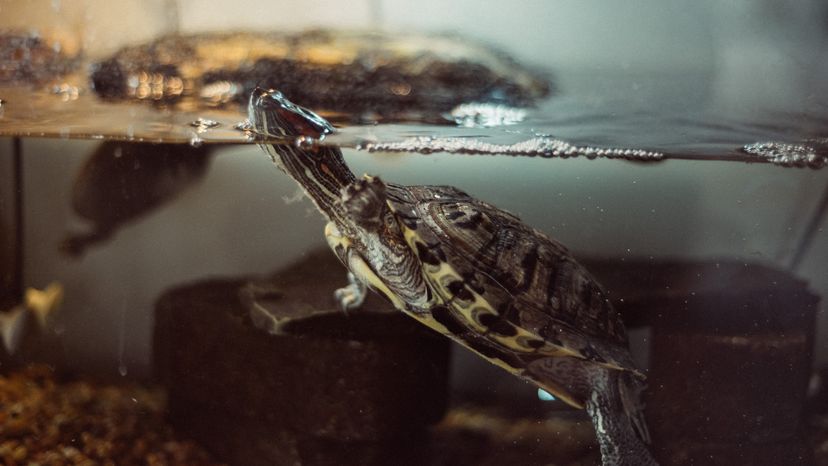
Key Takeaways
- Building a turtle tank involves ensuring enough space and water for the turtle to swim comfortably.
- The tank setup should include a proper balance of land and water areas, adequate UVA and UVB lighting to simulate natural conditions and a strong filtration system to maintain clean water.
- Important considerations for a turtle habitat include maintaining the correct water temperature and choosing a safe substrate for the land area to avoid ingestion and potential health risks.
A turtle makes a great pet if you provide the right habitat. Aquatic and semi-aquatic turtles have their own requirements in terms of water versus land area, lighting, heating, humidity and substrate (material that covers the bottom of the tank) [source: Foster and Smith Educational Staff]. Ask your local pet store for guidance.
Here are some general guidelines for building the right turtle tank:
Advertisement
- Choose an aquarium large enough to give the turtle plenty of room. Remember, while a baby turtle requires a 10-gallon (37.9-liter) aquarium, a fully grown adult will require at least twice that volume, depending on its carapace (outer shell) size.
- Provide enough water for your turtle. Aquatic turtles require more water than do semi-aquatic turtles. Either way, the water should be deep enough for the turtle to swim in [source: CVM.MSU].
- Provide enough land area. Different types of turtles require different amounts of land. Aquatics need less land than do semi-aquatics. The land area should be easy to climb onto, yet high enough to stay dry. There should be enough room for basking. Use bricks, foam, rocks or wood for the dry area.
- Provide adequate lighting. UVA and UVB lighting is best for turtles. Use a timer to simulate a day/night cycle, with 12 to 14 hours of light and 10 to 12 hours of darkness [source: Foster and Smith Educational Staff]. It's best to place the tank out of direct sunlight.
- Use a proper filtering system. The filter should be strong enough to properly clean a tank of your size. If you don't use a filter, you'll have to change the water weekly -- or more often if it's dirty.
- Keep the water at the proper temperature with a heating system and thermometer.
- Decide what substrate to use. Most turtles require a soft substrate on the bottom of the dry area of the tank. Some turtles will eat the substrate, which could be dangerous. Sand or some other soft soil is the best choice for substrate [source: CVM.MSU].
Advertisement